The Boathouse Restaurant and Culinary Workshop

Of the nearly 20 beaches and small coves strung like pearls along the western coast of Phuket, among the most alluring is Kata near the southern end of the island. M.L. Tri Devakul, a prominent Thai architect and developer, first discovered this almost deserted stretch of white sand and clear blue water in the late 1970s and was so struck by its charms that he built a simple thatched-roof holiday house on a nearby hill. Over the years since, the house has undergone many changes and so, with the growth of tourism, has Kata, though in both cases with remarkably little effect on the pristine atmosphere that constitutes so much of its allure. Kata, for instance, separated by a rocky prominence into KataYai ("Big Kata") and Kata Noi ("Little Kata") has acquired a number of low-rise hotels and lodges, beginning with the Club Mediterranee which extends along a considerable part of the larger beach. M.L.
Tri, who designed some of the club's buildings, bought a nearby piece of land for himself and in 1986 opened a restaurant. He called it the Boathouse after an old painted fishing boat that stood near its entrance. Basically a large, airy pavilion, the Boathouse proved a success not only with visitors but also with more permanent Phuket residents. It offered a variety of classic Thai dishes, most of them based on the abundant seafood caught daily in the Andaman Sea, served both in the pavilion and outside on a shady terrace overlooking the sea. Food has remained a central part of the Boathouse's appeal, with a wide range of old favorites as well as specialities developed by the talented Executive Chef Tummanoon Punchun. A sophisticated wine cellar, opened in the mid-90s, became the only one in Thailand selected for four consecutive years by the prestigious Wine Spectator.
As a result, even during the low season, the restaurant is one of the most lively scenes on Phuket for superlative dining, drinkingand as a social gathering place par excellence. The Boathouse Culinary Workshop, offering weekend cooking classes under the direction of Chef Tummanoon, began in the summer of 1994, mainly as a way of attracting low-season guests.Very quickly, however, it established itself as one of the most popular Thai cooking schools in the country, praised by critics in publications such as the Times of London, the New York Times, and the Los Angeles Times. Chef Tummanoon favors a step-by-step, hands-on method of instruction, which he offers every Saturday and Sunday at the Boathouse to appreciative classes consisting of both hotel guests and outsiders. Like all good cooks, he begins with an explanation of the basic ingredients, which in Thailand consist of a wide variety of herbs, spices, and vegetables that provide its special flavorsnot just spicy hot but also sweet, sour, and salty in varying degrees to suit the particular dish. Some are familiar to outsiders, like chillies, garlic, coriander, spring onions, aubergine and cucumber. Others may be exotic like aromatic lemon-grass, Thai basil, galangal and the leaves and fruit of the kaffir lime.
He then moves on to demonstrate the various methods of chopping, dicing and pounding in a mortar that precede the actual assembly of most dishes. Students learn these traditional techniques by taking part in the process with guidance from the chef and assistants.A total often recipes are learned during the two-day course. While most are standard Thai dishes, they have usually been given a special added touch by Chef Tummanoon and so have become personal creations of the Boathouse. Each recipe demonstrated in class has been selected for ease of preparation and adaptability to western kitchens. 

 Basil is often used as a seasoning and garnish in Thai cooking. There are three varieties of basil that are used in Thai cuisine.
Basil is often used as a seasoning and garnish in Thai cooking. There are three varieties of basil that are used in Thai cuisine.
Thai basil (horapa) tastes rather like anise, looks like sweet basil and is used in red and green curries. Lemon basil (manglak) has a lemony flavor, tiny leaves and is usually sprinkled over salads or used in soups. Holy basil or hot basil (kaprow) has a clove-like taste and purple-reddish tinged leaves. It doesn't store well, so buy just before you intend to use it. European basil can be used as a substitute for all varieties if you can't find the Thai varieties.  Chillies are indispensable in Thai cooking and many different varieties are used.
Chillies are indispensable in Thai cooking and many different varieties are used.  Chillies are indispensable in Thai cooking and many different varieties are used.
Chillies are indispensable in Thai cooking and many different varieties are used.
The large, finger-length green, red or yellow chilli is moderately hot. Dried red chillies of this variety are ground to make chilli flakes or ground red pepper. Tiny red, green or yellowy-orange bird's-eye chillies are used in soups, curries and sauces, and are extremely hot. They are also available dried.  Chinese celery is much smaller with thinner stems than the normal Western variety and has a very intense, parsley-like flavor. The leaves and sometimes the stems are added to soups, rice dishes and stir-fried vegetables.
Chinese celery is much smaller with thinner stems than the normal Western variety and has a very intense, parsley-like flavor. The leaves and sometimes the stems are added to soups, rice dishes and stir-fried vegetables.
Coconut cream and coconut milk are used in many Thai desserts and curries. To obtain fresh coconut cream (which is normally used for desserts), grate the flesh of 1 coconut into a bowl (about 3 cups of grated coconut flesh), add cup water and knead thoroughly a few times, then strain with a muslin cloth or cheese cloth. Thick coconut milk is obtained by the same method but by adding double the water to the grated flesh (about 1 cup instead of cup). Thin coconut milk (which is used for curries rather than desserts) is obtained by pressing the coconut a second time, adding 1 cup of water to the same grated coconut flesh and squeezing it again. Although freshly pressed milk has more flavor, coconut cream and milk are now widely sold canned or in packets that are quick and convenient.  Coriander, also known as cilantro or Chinese parsley, is the most common herb used in Thai cooking.
Coriander, also known as cilantro or Chinese parsley, is the most common herb used in Thai cooking.
The whole plant is usedthe root, stem and leaves. The seeds are roasted and then ground in a spice mill and used in curry pastes. The leaves are used for their fresh flavor, and as a garnish. For storage, wash and dry the fresh leaves before placing them in a plastic bag in the refrigeratorthey will keep for 5 to 6 days. Fish sauce is indespensable in Thai cooking. Made from salted, fermented fish or prawns, good quality fish sauce is golden-brown in color and has a salty tang.
It is used in the same way as the Chinese use soy sauce. 


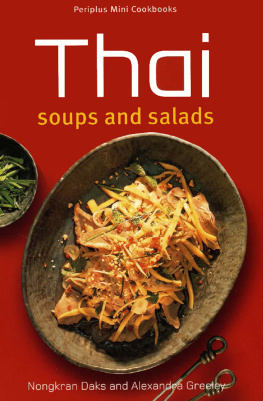
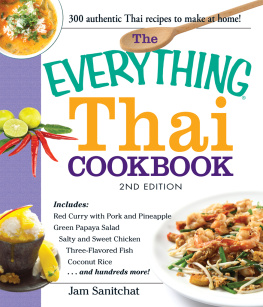
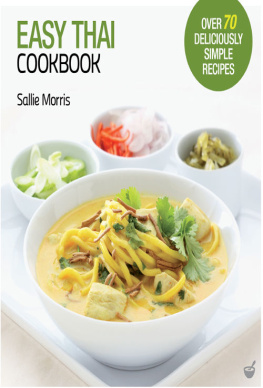
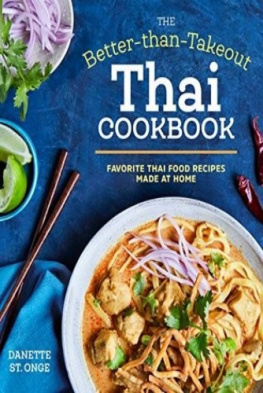
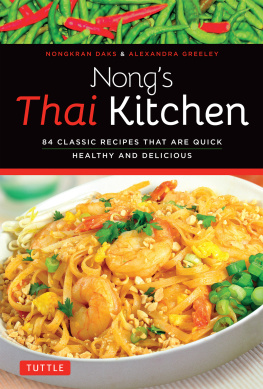

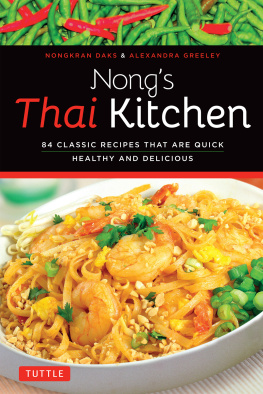
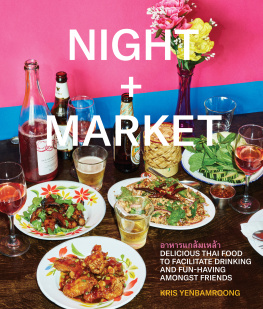
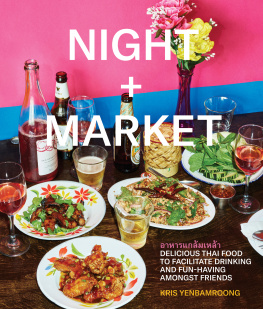
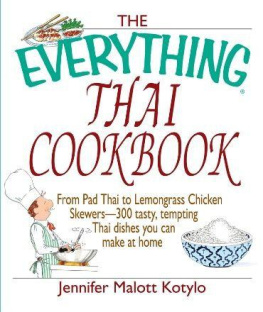
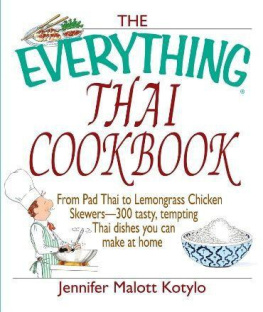

 Of the nearly 20 beaches and small coves strung like pearls along the western coast of Phuket, among the most alluring is Kata near the southern end of the island. M.L. Tri Devakul, a prominent Thai architect and developer, first discovered this almost deserted stretch of white sand and clear blue water in the late 1970s and was so struck by its charms that he built a simple thatched-roof holiday house on a nearby hill. Over the years since, the house has undergone many changes and so, with the growth of tourism, has Kata, though in both cases with remarkably little effect on the pristine atmosphere that constitutes so much of its allure. Kata, for instance, separated by a rocky prominence into KataYai ("Big Kata") and Kata Noi ("Little Kata") has acquired a number of low-rise hotels and lodges, beginning with the Club Mediterranee which extends along a considerable part of the larger beach. M.L.
Of the nearly 20 beaches and small coves strung like pearls along the western coast of Phuket, among the most alluring is Kata near the southern end of the island. M.L. Tri Devakul, a prominent Thai architect and developer, first discovered this almost deserted stretch of white sand and clear blue water in the late 1970s and was so struck by its charms that he built a simple thatched-roof holiday house on a nearby hill. Over the years since, the house has undergone many changes and so, with the growth of tourism, has Kata, though in both cases with remarkably little effect on the pristine atmosphere that constitutes so much of its allure. Kata, for instance, separated by a rocky prominence into KataYai ("Big Kata") and Kata Noi ("Little Kata") has acquired a number of low-rise hotels and lodges, beginning with the Club Mediterranee which extends along a considerable part of the larger beach. M.L. 

 Basil is often used as a seasoning and garnish in Thai cooking. There are three varieties of basil that are used in Thai cuisine.
Basil is often used as a seasoning and garnish in Thai cooking. There are three varieties of basil that are used in Thai cuisine. Chillies are indispensable in Thai cooking and many different varieties are used.
Chillies are indispensable in Thai cooking and many different varieties are used.  Chinese celery is much smaller with thinner stems than the normal Western variety and has a very intense, parsley-like flavor. The leaves and sometimes the stems are added to soups, rice dishes and stir-fried vegetables.
Chinese celery is much smaller with thinner stems than the normal Western variety and has a very intense, parsley-like flavor. The leaves and sometimes the stems are added to soups, rice dishes and stir-fried vegetables. Coriander, also known as cilantro or Chinese parsley, is the most common herb used in Thai cooking.
Coriander, also known as cilantro or Chinese parsley, is the most common herb used in Thai cooking.